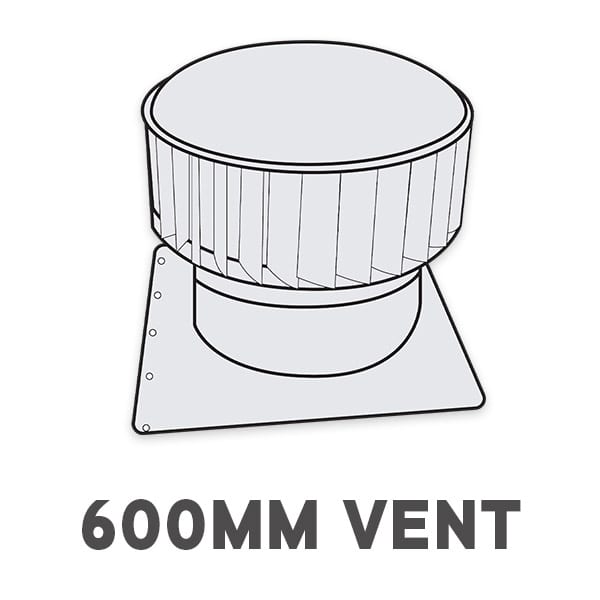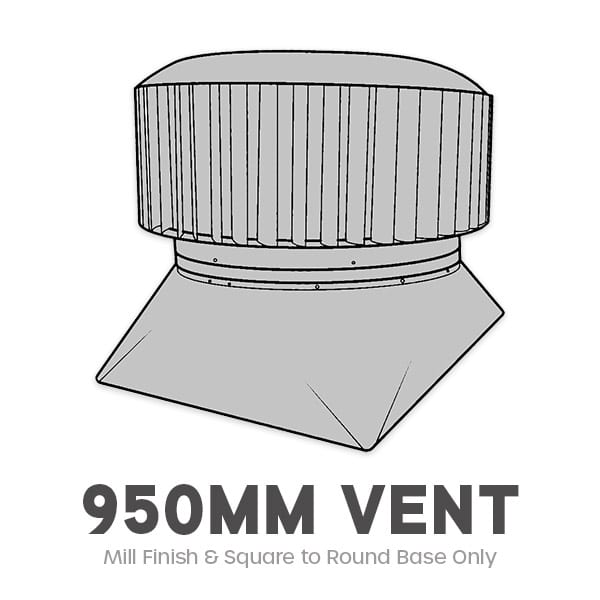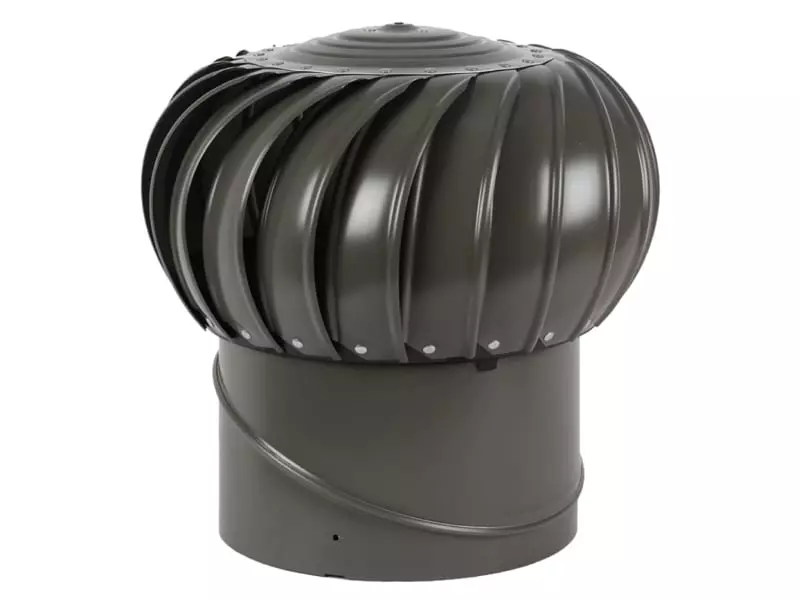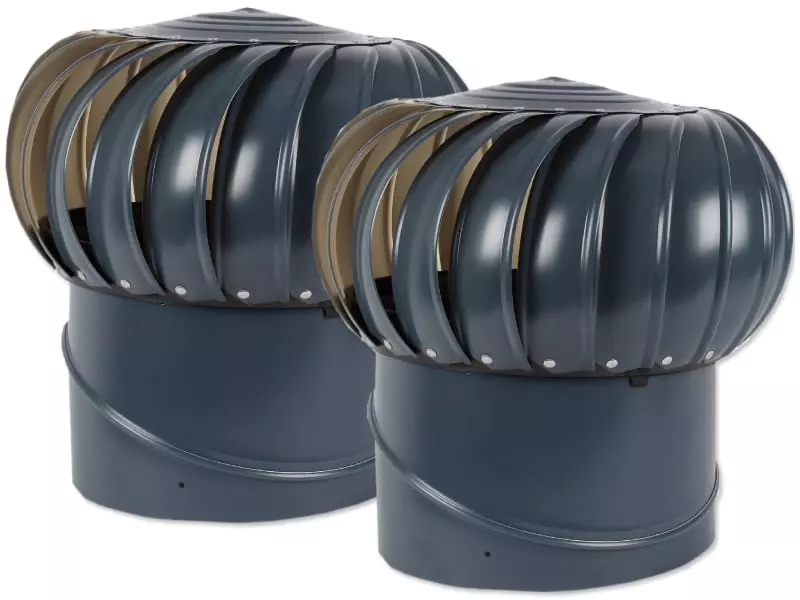Colorbond Rainwater Head Prices – A Popular Choice
Rain Heads Custom Made Shipped Free Australia Wide – Click Here >
Dambuster Rain Heads Shipped Free Australia Wide – Click Here >
Commercial Industrial Roof Vents 300mm-950mm – Click Here >
Eco-Friendly Roofing Insulation Shipped Free – Click Here >
Gutter Sumps Shipped Free Australia Wide – Click Here >
Rainwater Head Prices in Australia
In case you are a budding or an aspiring homeowner in Australia, there are one or two things that you need to know regarding the construction of homes. If you are leaving in areas such as Adelaide SA that experience heavy rains, you need to incorporate rainwater heads in your construction. What is a rainwater head? A rainwater head, also referred to as leaf eater, is a headpiece that is designed to fit at the top of any vertical PVC piping. It is more of a screen entry point situated at the top of the pipework, whose primary role is to lead water into your tank.
It is therefore positioned between the gutter and the downpipe.
How do rainwater heads work?
Rainwater heads are primarily incorporated in structural designs to aid the flow of water away from the roof. They form the external overflow point by reducing water surges inside the water collection system. When it rains, the rain washes away leaves and residues from the roof channeling them into the water system. The rainwater head, therefore, acts as a deflection point where matter such as leaves, residues, insects and sticks are filtered out, allowing only freshwater to pass into the tank.
A rainwater head, therefore, consists of a dome, a drainage pipe, a siphon and a ball and cock mechanism. The drainage pipe has a drainage exit and a wall consisting of a water outlet hole. The drainage pipe is connected to the bottom of the dome, and it is through this that water is channeled into the drainage system. The water outlet hole is fitted at a position similar to or lower than the height of the roof.
Why are rain heads positioned outside?
Rain heads are customarily situated outside to minimise the risk of water flowing inside the building. Remember, apart from filtering out the unwanted residues, rainwater heads also prevent water surges. In extreme conditions such as those witnessed in Sydney, SW, during heavy rains, you should consider adding an overflow provision for greater protection against these water surges.

Supply & Installation Price
Sydney Metro Only

Supply & Installation Price
Sydney Metro Only
Rainwater head styles
There exist different styles of rainwater heads to match your specifications and building styles. You should, therefore, be keen on your selection. Take a look at the following styles:
i) Round rainwater head
Just from the name, this rainwater head has a circular design. For those looking for a complementing style on their architectural design, this is your ideal choice. This type has flawless modern curves around the edges that make a bold, dramatic statement on your house.
Round rainwater heads usually come in strong and bright colors, therefore, adding a level of aesthetic value to your building. You get six different styles under this which are the circular rainwater head, the half-round head, the quarter round head, the U-shape head, the concave and the convex rainwater head. They are the trendiest.
ii) Box Rainwater head
This type of rainwater head is made of sharp lines and therefore assumes bold shapes. It offers a simple yet practical style for those who do not fancy dramatic designs on their constructions. The good thing about this type of rainwater heads is that it complements any architectural design.However, if you want to nail it with these rainwater heads properly, install them in small commercial buildings or structures which have rendered brickwork. You, therefore, get a range of square, splayed and tapered designs to pick from.
The box rainwater heads come in four styles, which are diamond, triangular, splayed and flat bottom.
iii) Tapered rainwater heads
These rainwater heads are commonly used in industrial architecture because of their strength and resilience. They can, therefore, shoulder any type of weather variations, whether you are in Brisbane or Hobart Tasmania.These types have tapered bottoms that assist in naturally rotating the rainwater as it is channeled through the piping system of your tank. They are, therefore, highly efficient. At the top, there is a bead that helps in strengthening the rain head.
During maintenance, this bead also protects the rainwater head from damage. Under tapered, we have the custom tapered, which looks slightly different from the original tapered design and the low profile head, which is a bit shorter.
Rainwater head styles
There exist different styles of rainwater heads to match your specifications and building styles. You should, therefore, be keen on your selection. Take a look at the following styles:
i) Round rainwater head
Just from the name, this rainwater head has a circular design. For those looking for a complementing style on their architectural design, this is your ideal choice. This type has flawless modern curves around the edges that make a bold, dramatic statement on your house.
Round rainwater heads usually come in strong and bright colors, therefore, adding a level of aesthetic value to your building. You get six different styles under this which are the circular rainwater head, the half-round head, the quarter round head, the U-shape head, the concave and the convex rainwater head. They are the trendiest.
ii) Box Rainwater head
This type of rainwater head is made of sharp lines and therefore assumes bold shapes. It offers a simple yet practical style for those who do not fancy dramatic designs on their constructions. The good thing about this type of rainwater heads is that it complements any architectural design.However, if you want to nail it with these rainwater heads properly, install them in small commercial buildings or structures which have rendered brickwork. You, therefore, get a range of square, splayed and tapered designs to pick from.
The box rainwater heads come in four styles, which are diamond, triangular, splayed and flat bottom.
iii) Tapered rainwater heads
These rainwater heads are commonly used in industrial architecture because of their strength and resilience. They can, therefore, shoulder any type of weather variations, whether you are in Brisbane or Hobart Tasmania.These types have tapered bottoms that assist in naturally rotating the rainwater as it is channeled through the piping system of your tank. They are, therefore, highly efficient. At the top, there is a bead that helps in strengthening the rain head.
During maintenance, this bead also protects the rainwater head from damage. Under tapered, we have the custom tapered, which looks slightly different from the original tapered design and the low profile head, which is a bit shorter.
iv) Curved rainwater heads
These rainwater heads are made in such a way that they can blend with any architectural design. They consist of simple lines that provide a smooth flow in their construction, giving you a classic shape with a timeless appearance. In case you would like a vintage touch on your plumbing system, this is the right rainwater head. For those who would like a modernized approach too, this rainwater head has you covered, and for those who would like to save some money, this is the perfect design.
Under this, we have the half-cylinder, the conical head and the ned Kelly.
v) Segmented rainwater heads
The last style is the segmented heads, which are skillfully made to serve ornate and intricate architecture. They are usually good looking and skillfully made. For those who would like to add a touch of class, this is your ideal style.Under this, we have the colonial water head and the ornate rainwater head.
Benefits of a rainwater head
You must be wondering why you need to install rainwater heads in your structures. The truth is, these products are highly beneficial. Here are some of the benefits of a rainwater head:
i) Aesthetic value- Some people install rainwater heads to their buildings to complement their architectural designs. Some of the rainwater heads are usually rich in color, with outstanding models that make them highly attractive.
In case you are looking for the perfect rain head for a commercial estate, I would highly suggest that you go for the vibrant ones. A colorbond rainwater head is mostly used for aesthetics thanks to its rich and vibrant appearance.
ii) Quality water- A rainwater head ensures that you get higher quality tank water. This is because other residues such as insects, leaves and sticks are filtered out, leaving behind clean water to flow into your tank.
For those who would like to use the rainwater collected for drinking or cooking, you should install a rainwater head.
iii) Cost-effectiveness- It is cheaper to screen water at the entry point to your pipework as compared to when it has already been stored. You can, therefore, keep out debris and residue at no extra expense.
Even though gutter guards with meshes attached at the entry point may help keep out debris from your rainwater, they are generally not as effective. They also attract huge installation funds and may take longer to install.
iv) Rainwater heads also reduces your overall tank maintenance and thereby saves you money. It is required that you inspect your tank every two to three years. This is essential in checking for sludge build-up.
Rainwater heads filter out your water before it is allowed into the channeling pipes, which in return leaves you with a cleaner tank. You do not, therefore, have to flush out sludge after every short while.
v) Top-notch filtration- The mesh screens found on rain heads are generally different from the other types of filtration systems since they have a smaller aperture. They do not, therefore, just filter out leaves but residues as little as mosquitoes.
Rainwater heads are therefore necessary in case you have underground pipework, which is vulnerable to sediments.
How to choose the right rainwater head
There are several rainwater heads that one can obtain. How then do you know that the one you chose is the perfect one for you? The following are some of the factors that will guide your purchase:
i) Specifications- You need to first confirm your water system specifications before going for a rainwater head. First, obtain the measurement of your downpipe. You need to get a water head that matches your downpipe for accuracy.
In case you want to save on time, I would prefer that you install both the rainwater head and the downpipe at the same time. This also offers you room for more accuracy. Remember, however, that you might need to change your water head in the future.
ii) Material- The materials used in the making of the rainwater head is also crucial while choosing. For most rainwater systems, the primary materials to choose from are plastic and metal.
In case you are operating under a tight budget, the plastic rainwater heads are the ideal choice. These are generally made of PVC-U and also work well for easily installable designs. These designs do not offer a longer lifespan, however.Metal rainwater heads have several advantages ranging from different styles to a longer lifespan. You, therefore, get a stylish feel and a durable stay. The only downside with the metal systems is that they need to be maintained periodically since they are vulnerable to rust.
The metal rainwater heads might also be costly due to the availability of different styles.
iii) Shape- Juts as we saw in the different types and styles of rainwater heads, these water systems come in various forms. We, therefore, have the round, conical, segmented and even tapered heads.You, therefore, need to be vigilant when picking the right shape. For starters, here are some of the factors that should guide your selection based on shape:
• The overall architecture of your home.
• The tune of Water flow anticipated.
• The amount of rainwater your gutter can hold.
Make sure, therefore, that you settle on the right shape.
iv) Aesthetics- Another critical factor that you should look out for is how your rainwater head looks. You should get a Waterhead that matches the architectural design of your house both in its build and color. Remember, you need to complement your overall roofing design since the rainwater head becomes part of it after installation. For those who prefer vibrant designs, you can get the colorbond rainwater head of your choice.
v) Durability- You have to agree with me that the climatic conditions of Australia are, at times, unpredictable. You, therefore, need a rainwater head that is durable enough. Durability, however, is a wide factor that depends on several sub-factors.On durability, the first factor to consider is the material used in the making of the rainwater head. Just like we mentioned, the plastic rainwater heads are durable but not as much as the metal heads, just that you need regular maintenance to keep them rust-free.

Supply & Installation Price
Sydney Metro Only

Supply & Installation Price
Sydney Metro Only
1 Roof Vent
Supply & Installation Price
$520/1

1 Ampelite 300 Spinaway
Colorbond or Mill Finish Supply & Installation Price
Download PDF
2 Roof Vent
Supply & Installation Price
$860/2

2 Ampelite 300 Spinaway
Colorbond or Mill Finish Supply & Installation Price
Download PDF
3 Roof Vent
Supply & Installation Price
$1,090/3

3 Ampelite 300 Spinaway
Colorbond or Mill Finish Supply & Installation Price
Download PDF
4 Roof Vent
Supply & Installation Price
$1,300/4

4 Ampelite 300 Spinaway
Colorbond or Mill Finish Supply & Installation Price
Download PDF
The mRainwater heads vs Gutter guards
You might be wondering why you need a rainwater head when you can just install gutter guards. To help you with this, we will compare some aspects between these two to let you know why rainwater heads are still the best.In case you are wondering what gutter guards are, these simply mesh screens that are usually fixed at the top of the gutters. Here are some of the comparisons
i) Price- How do these two sells? Once you conduct market research, you will realize that rainwater heads are much more affordable as compared to the gutter heads. The truth is rain heads go for as low as 100 dollars.For an average house, you need a budget of around one thousand dollars on the gutter head. How costly? For a more economical life, rainwater heads are the best.
ii) Materials- The materials used in making these two are just the same. They both come in plastic and stainless steel design. If your main priority is keeping your gutters clean, plastic rainwater heads will serve you best.
In case you need more than keeping your gutter clean, stainless steel is the best option. You will have better quality water. Remember, some rodents can chew through plastic, predisposing you to several infections.
iii) Aperture- Filtration, by a more significant percentage, relies on the aperture size found in the mesh. For most gutter guards, the aperture size is usually larger than 1mm, and therefore certain particles can still escape. Such include mosquitoes and small insects.
For smaller debris, therefore, you need a smaller aperture size, which is a plus on the rainwater head. They have apertures measuring 0.955 mm, which prevents insects such as mosquitoes from passing through.
For top-notch filtration, therefore, rainwater heads are the best.
iv) Installation- Another critical comparison that we should dwell on is installation. Which one among the two takes more time to install in your roofing system? The thing is, gutter meshing needs more time for installation.You need to go up the roof, which predisposes you to even more danger. Even after getting done with the roof, you still need to install pipework, which adds to the costs incurred.
For a rainwater head, however, all you need to do is to make sure that the headpiece connects directly to the gutter downpipe, and you are done. No complicated installation procedures, and you get to save on time too.
v) Purpose- Another essential comparison is the purpose of these two. Rainwater heads are usually employed to offer better water quality, which is a much more prominent use. It is not only limited to keeping your gutters clean, therefore.
Gutter guards, however, protect your gutters from leaves, keeping it clean, which is usually their main primary function.From these comparisons, you can see that rainwater heads are way better than the gutter guards. They are cheap, perform more than just one function, and are easy to install. They also provide better filtration as compared to the gutter guards.
Before incorporating your rainwater heads in your structure, you should first find out the different weather variations in various states in Australia. Let us look at the following states:
• Brisbane- In Brisbane, the summers are generally warm but wet, and therefore you need a rainwater head. Winters are, however, short, cool and mostly clear. The temperature never falls below 42 degrees F and above 89 degrees F.
• Sydney- In Sydney, the climate is normally sunny. Winters are mild, whereas summer is warm. The average temperature, therefore, falls between 18.6 to 25.8 degrees during summer and the average humidity stands at 65%.
For winter, the temperatures fall between 8.8-17 degrees Celsius. The highest rains are experienced in June.
• Melbourne- In Melbourne, rain is mainly experienced in February, March, April and May. Temperatures fall to as low as 10% in May, which also has the longest rainy days at 8.
• Adelaide- Adelaide is slightly different from Brisbane in that the summers are usually dry. The winters are also cold and windy. Adelaide is, however, rainy, with a rainy period summing up to eleven months. Most storms are experienced around June.
• Perth- In Perth, the summers are similar to Adelaide-warm and dry. The winters are, however, more prolonged and wetter compared to Brisbane. This, therefore, is the time rain falls most. This region has a rainy period that lasts ten months, with the most rains falling in July.
• Darwin- In Darwin, the wet season is usually overcast, whereas the dry season is mostly muggy. The rain period lasts for 8.1 months, which is around September to May. The highest recorded rainfall is around February.
• Hobart Tasmania- In Hobart, the weather is generally cold. The lowest temperature is experienced around June at eight degrees Celsius. Tasmania has the greatest varying weather with a maritime climate.
Conclusion
Rainwater heads have more than just one function. They both play aesthetic roles, which is complementing your building design and water channeling roles, leaving you with high-quality water. In Australia, you can easily obtain these amazing water systems form Bunning by searching rainwater head bunning.
